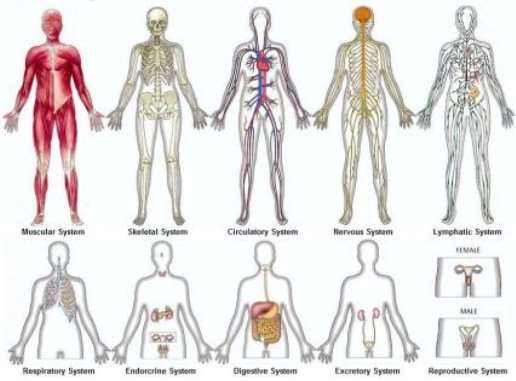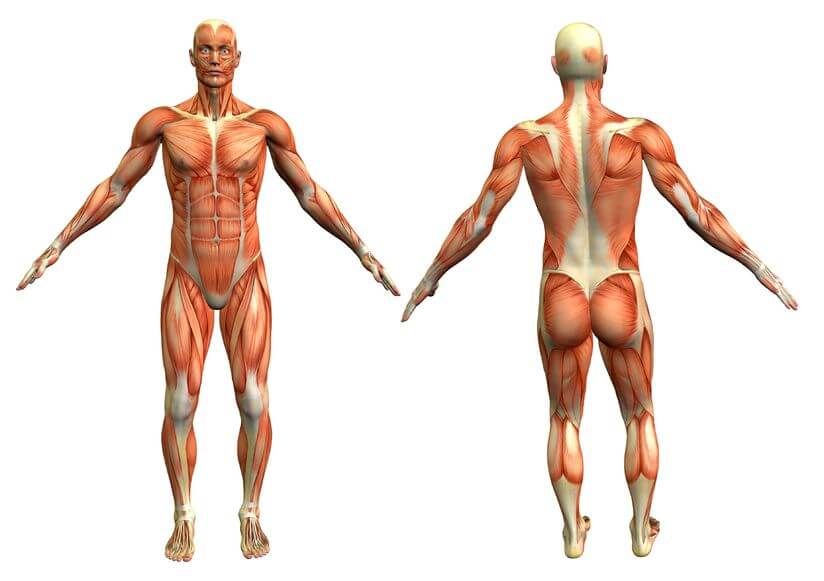Hey there! Ever wondered what body system is most affected by massage? Well, you’re in luck because we’ve got all the answers for you in this article! As a blog run by massage therapists and enthusiasts, we’re passionate about sharing insights and helping others who love giving and receiving massages.
In this article, we’ll dive deep into the fascinating world of massage and explore how it affects the different body systems. From the musculoskeletal system to the nervous system and everything in between, you’ll learn how massage can have a positive impact on your overall well-being. So, if you’re curious to know more about the body systems that are most affected by massage, keep reading!

This image is property of s3-eu-west-1.amazonaws.com.
Musculoskeletal System
Massage therapy has a profound impact on the musculoskeletal system, providing relief from muscular tension and improving circulation to the muscles. Through various massage techniques, such as Swedish massage, deep tissue massage, and trigger point therapy, muscle fibers are stimulated and loosened, allowing for increased blood flow and oxygen to reach the muscles. This, in turn, helps to relax the muscles and alleviate tension.
Additionally, regular massage can enhance joint flexibility by stretching and mobilizing the joints. Joint mobilization techniques, such as passive range of motion exercises and stretching, help to lubricate the joints, improve their range of motion, and reduce stiffness. This is particularly beneficial for individuals suffering from conditions like arthritis or those recovering from injuries.
Massage therapy also aids in the reduction of muscle soreness. The manipulation and kneading of muscles helps to break down adhesions and scar tissue, promoting tissue healing and reducing inflammation. This can greatly benefit athletes or individuals engaged in strenuous physical activities, as massage can speed up the recovery process and prevent the development of chronic pain conditions.
Nervous System
Massage therapy has a calming effect on the nervous system, making it an excellent choice for individuals experiencing stress and anxiety. The slow, rhythmic strokes used in Swedish massage stimulate the parasympathetic nervous system, promoting relaxation and restful sleep. By reducing stress and anxiety levels, massage therapy can also help alleviate the symptoms of depression and improve overall mental well-being.
Furthermore, massages provide relief from headaches and migraines. The manipulation of soft tissues, particularly in the neck and shoulders, helps to release tension and alleviate the pain associated with headaches. Regular massage sessions can also prevent the recurrence of headaches and migraines by addressing their underlying causes, such as muscle tightness or poor posture.
Massage therapy also increases the production of endorphins, the body’s natural painkillers and mood enhancers. Endorphins help to reduce pain and promote feelings of happiness and relaxation. This can have a positive impact on individuals suffering from chronic pain conditions or those seeking to improve their emotional well-being.
Cardiovascular System
Massage therapy improves blood circulation throughout the body. The pressure applied during massage strokes helps to dilate blood vessels, allowing for increased blood flow to the muscles and organs. Improved blood circulation not only delivers fresh oxygen and nutrients to the tissues but also aids in the removal of metabolic waste products, such as lactic acid.
Regular massage sessions also contribute to reduced blood pressure. The relaxation response induced by massage helps to lower heart rate and decrease the production of stress hormones such as cortisol. This, in turn, helps to lower blood pressure levels and improve overall cardiovascular health.
Furthermore, massage therapy enhances heart function by promoting the relaxation of smooth muscles surrounding blood vessels, which can lead to decreased resistance in the vessels. This results in improved circulation and the overall efficiency of the cardiovascular system.
Massage therapy also benefits the lymphatic system, a critical component of the cardiovascular system. The rhythmic movements and pressure applied during massage stimulate the lymphatic system, promoting lymph flow and drainage. This helps to remove metabolic waste products and toxins from the body, strengthen the immune response, and reduce edema and swelling.
Respiratory System
Massage therapy has several positive effects on the respiratory system. Through the application of various massage techniques, such as tapotement and chest mobilization, lung capacity can be expanded. This helps individuals with respiratory conditions, such as asthma or chronic obstructive pulmonary disease (COPD), to improve their breathing and overall lung function.
Massage therapy also provides relief from respiratory ailments by loosening and mobilizing the muscles of the chest and upper back. This can help individuals with conditions like bronchitis or pneumonia by assisting in the clearance of excess mucus and promoting healthy breathing.
Additionally, massage therapy enhances oxygen intake. By improving blood circulation and tissue oxygenation, massage helps to ensure that an adequate supply of oxygen is delivered to the cells throughout the body. This is essential for overall health and well-being.

This image is property of www.sensemassage.co.uk.
Digestive System
Massage therapy stimulates peristalsis, the rhythmic contractions of the digestive tract that propel food through the digestive system. By applying gentle pressure and kneading the abdomen, massage can help to alleviate digestive disorders such as constipation, bloating, and gas.
Furthermore, massage therapy enhances nutrient absorption. Improved blood circulation resulting from massage helps to facilitate the delivery of nutrients to the cells, promoting optimal digestion and absorption. This can be particularly beneficial for individuals with nutrient deficiencies or those seeking to improve their overall nutritional status.
Massage therapy also promotes detoxification. The stimulation of lymphatic flow and drainage aids in the removal of metabolic waste products and toxins from the body. Regular massage sessions can help improve the function of the liver and kidneys, the primary organs responsible for detoxification.
Immune System
Massage therapy plays a crucial role in boosting the immune function. Regular massages increase the production of white blood cells, which are vital in combating infections and diseases. Additionally, massage stimulates the lymphatic system, speeding up the removal of waste products and toxins from the body. This, in turn, strengthens the immune response and reduces inflammation.
Furthermore, massage therapy speeds up the healing process. The increased blood circulation resulting from massage promotes tissue repair, reduces scar tissue formation, and speeds up the regeneration of cells. This can be particularly beneficial for individuals recovering from surgery or injuries.

This image is property of lakeoconeehealth.com.
Endocrine System
Massage therapy has a profound impact on the endocrine system, which is responsible for the regulation of hormones in the body. Regular massages help to balance hormone levels, reducing the production of stress hormones such as cortisol and increasing the production of feel-good hormones like serotonin and dopamine. This can lead to improved mood, reduced stress, and increased energy levels.
Massage therapy also regulates the stress response. The relaxation induced by massage helps to decrease the production of stress hormones and lowers blood pressure and heart rate. Over time, regular massages can help individuals develop a healthier stress response, promoting overall well-being and preventing the negative effects of chronic stress.
Additionally, massage therapy improves glandular function. By stimulating the endocrine glands, massage can enhance their hormonal secretion and overall functioning. This can help individuals with hormonal imbalances or conditions such as thyroid disorders or adrenal fatigue.
Integumentary System
Massage therapy has several positive effects on the integumentary system, which includes the skin, hair, and nails. Regular massages improve skin tone and texture by increasing blood circulation to the skin. This helps to deliver oxygen and nutrients to the skin cells, promoting a healthy and vibrant complexion.
Massage therapy also enhances natural skin hydration. The application of massage oils or lotions during a massage helps to moisturize the skin, increasing its elasticity and suppleness. This can be particularly beneficial for individuals with dry or dehydrated skin.
Additionally, massage therapy reduces the appearance of scars. By improving blood circulation and promoting tissue healing, massage helps to break down scar tissue and enhance the regeneration of healthy skin cells. This can help individuals with scars from surgeries or injuries to improve their appearance and regain confidence.

This image is property of www.sensemassage.co.uk.
Lymphatic System
Massage therapy has a significant impact on the lymphatic system, a network of vessels and organs that carry lymph fluid throughout the body. Regular massages increase lymph flow and drainage, helping to remove metabolic waste products, toxins, and excess fluid from the tissues. This can reduce edema and swelling and promote a healthy immune response.
Furthermore, massage therapy strengthens the immune response by stimulating lymphocyte production and enhancing lymphatic flow. Lymphocytes are a type of white blood cell that plays a crucial role in defending the body against infections and diseases. By boosting lymphocyte production, massage therapy enhances the immune system’s ability to fight off pathogens and maintain overall health.
In conclusion, massage therapy has numerous benefits for various body systems. From providing relief from muscular tension and improving circulation to enhancing joint flexibility and reducing muscle soreness, massages have a profound impact on the musculoskeletal system. Additionally, massages decrease stress and anxiety, promote relaxation and restful sleep, and increase the production of endorphins, benefiting the nervous system. Massage therapy improves blood circulation, reduces blood pressure, enhances heart function, and boosts the lymphatic system, positively affecting the cardiovascular system. It expands lung capacity, relieves respiratory ailments, enhances oxygen intake, and improves breathing patterns, benefiting the respiratory system. Moreover, massages stimulate peristalsis, alleviate digestive disorders, enhance nutrient absorption, and promote detoxification, benefiting the digestive system. They also boost immune function, increase white blood cell count, speed up the healing process, and reduce inflammation, positively impacting the immune system. Massage therapy balances hormone levels, regulates the stress response, improves glandular function, and increases energy levels, benefiting the endocrine system. It improves skin tone and texture, increases circulation to the skin, enhances natural skin hydration, and reduces the appearance of scars, benefiting the integumentary system. Lastly, massages increase lymph flow and drainage, remove metabolic waste products, strengthen the immune response, and reduce edema and swelling, benefiting the lymphatic system. To experience these benefits, it is advisable to consult with a professional massage therapist for personalized treatment. With regular massages, you can improve your overall health and well-being efficiently.
